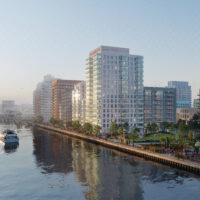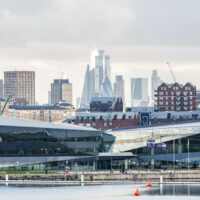
Regeneration news
Meet the man behind the plan, London City Airport's Robert Sinclair
Over the past few months, we’ve been asking some of this area’s biggest players about the values that shape their vision. Next up: London City Airport’s CEO, Robert Sinclair.
Aeroplanes soaring over the water are as distinctive a sign that you’re in the Royal Docks as towering cranes or the chimneys of Tate & Lyle. We met Robert Sinclair at his headquarters overlooking the airport. Outside, passengers trundled past with luggage and construction workers worked on the airport’s plan to transform the terminal.
The influence of LCY, as it’s known, looms as large in the eastern docks as ExCeL London does in the west. These two pioneers also attract similar visitor numbers annually: ExCeL’s 4 million to London City’s 4.8 million in 2018. And the plane-watching opportunities are an unmistakable feature of the Royal Albert Dock skyline.
It’s easy to forget, then, that LCY is small as London airports go. With a market share of just 2.7% of London air travel, the airport is a minnow in the big pond dominated by Heathrow and Gatwick.
We are an airport that's connected to its communities and London.
Robert Sinclair, London City Airport CEO
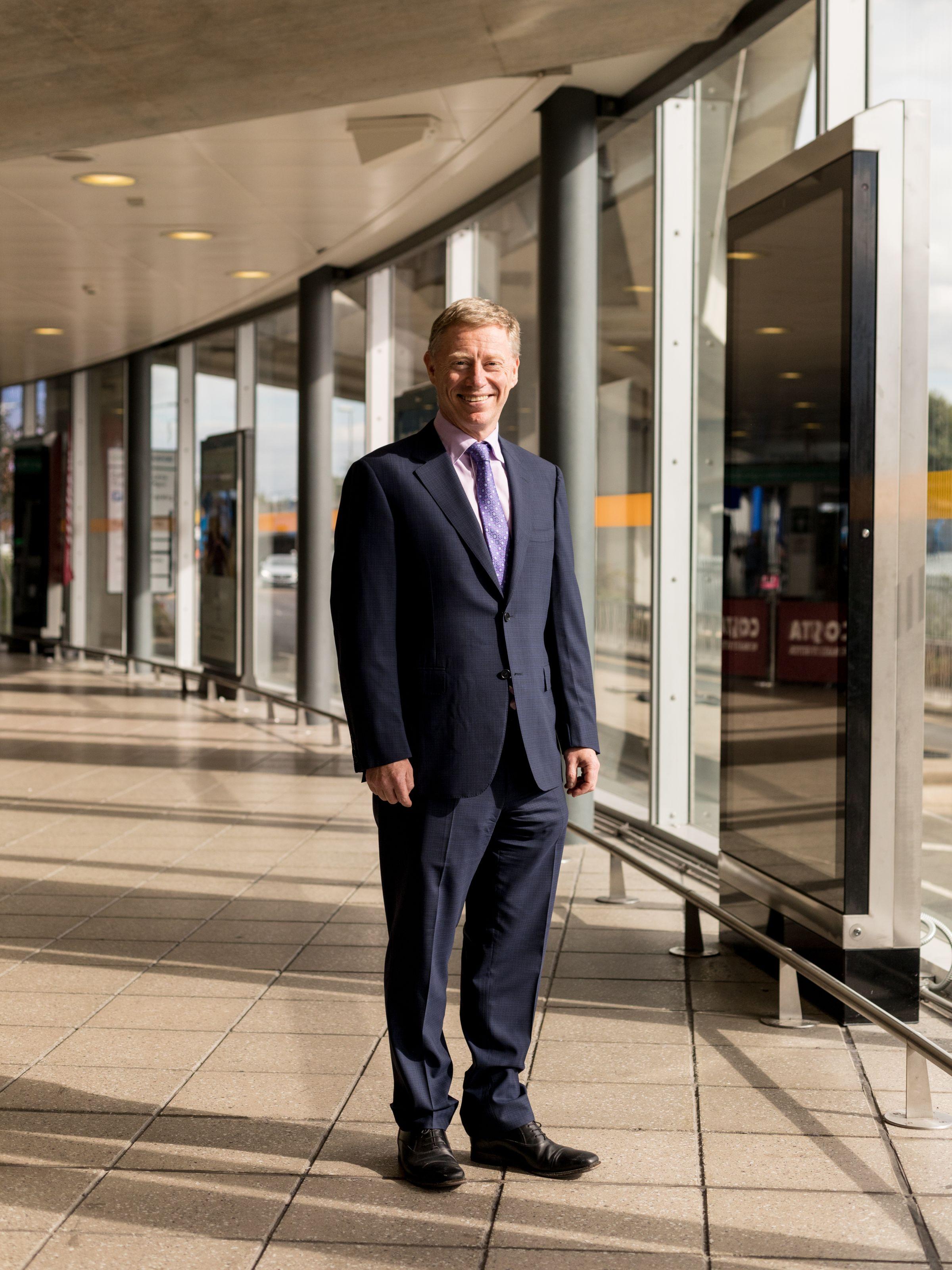
It’s a point that Robert is keen to stress when he’s asked about the airport’s 2020-2035 Draft Master Plan: “We are the smallest airport in London by a long, long way, and even in fifteen years’ time we’re only assuming our market share will be 4%.”
The 85-page Draft Master Plan is currently out for consultation. And it’s a gripping read: a dispatch from the cutting edges of technology and international business, where global politics intersects with engineering innovation. It predicts battery-powered aircraft, promises carbon neutrality, proposes a blockchain technology to identify passengers.
As the masterplan warns, “The future is unpredictable.” However, the airport set a similarly long-range target back in 2006 — 5 million passengers by 2020 — and they’ve hit that a year early.
But the statistic that’s provoked the most discussion is the figure of 11 million passengers a year by 2035. While the growth would mean a boost for travellers and the East London economy, this airport, unlike many, is surrounded by homes. Almost 30,000 people fall within the area affected by plane sound, known as the noise contour.
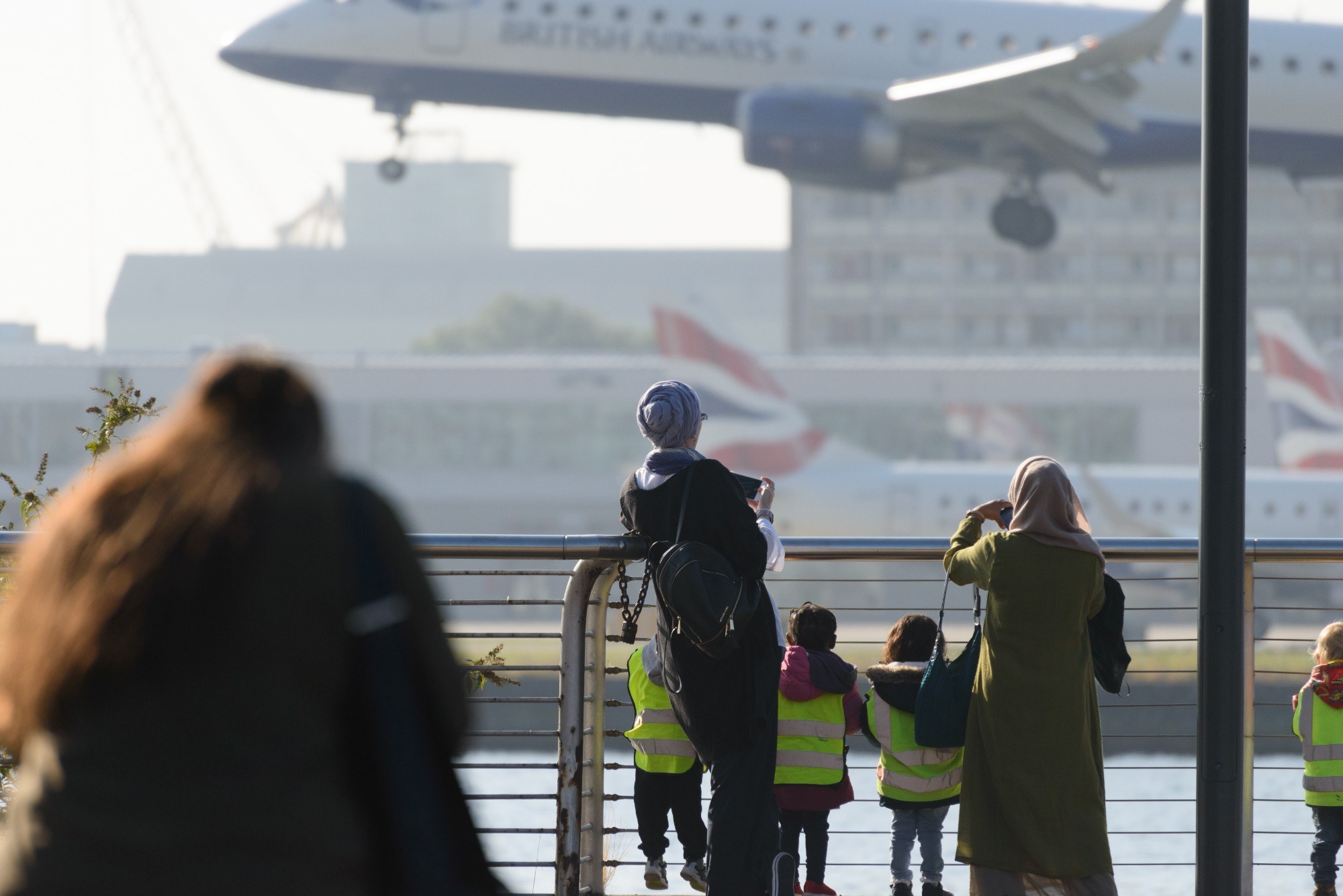
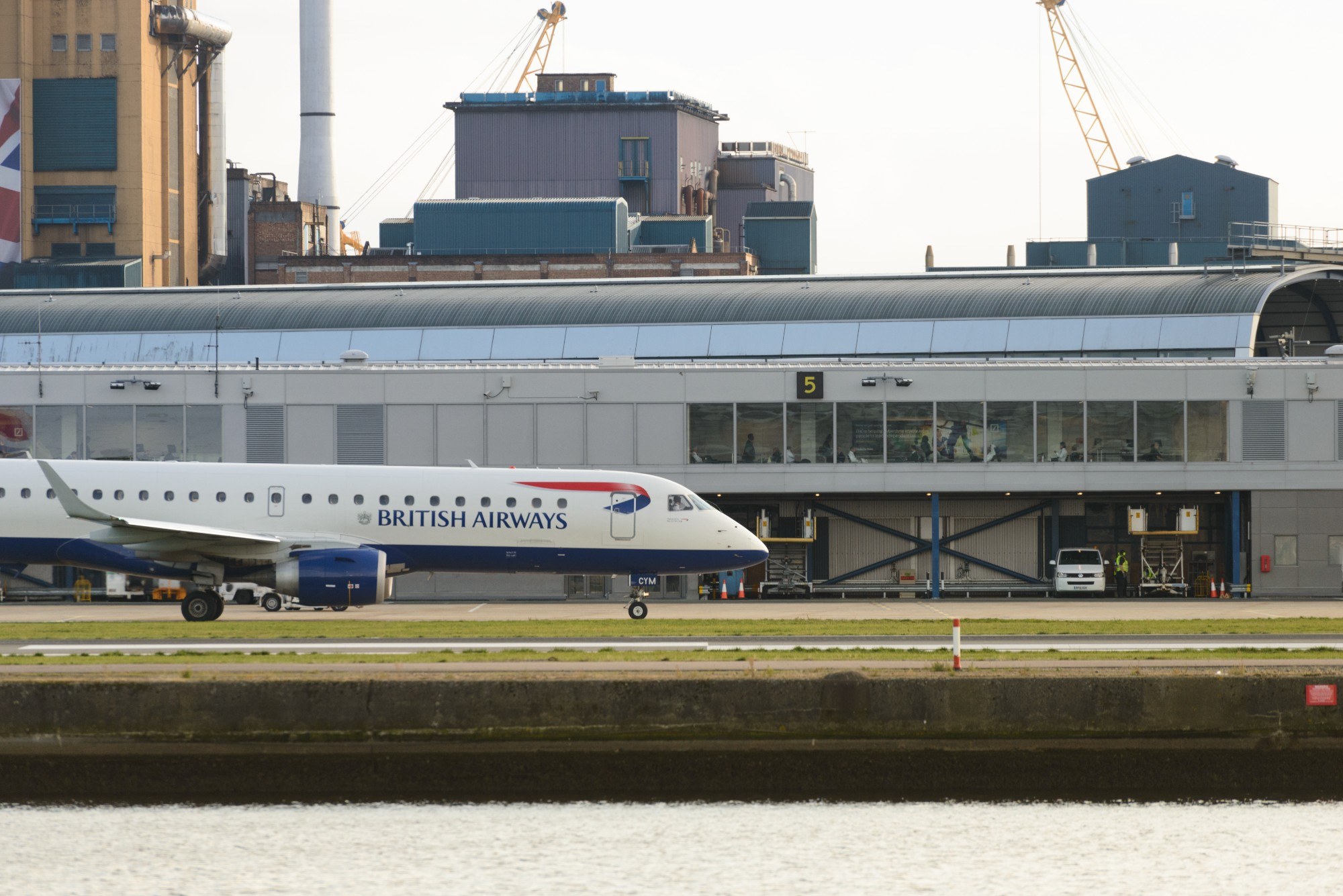
Plane watching
Royal Albert Dock is the perfect spot. Photos: Tian Khee Siong.
What would Robert say to those concerned about additional noise? In response, he walks to the window and peers outside. “Do we have one of our A220s sitting out there? Swiss Airlines, they fly the A220, which is one of these new generation aircraft. People say, ‘There’s no such thing; these planes aren’t getting any quieter,’ and that’s rubbish. Listen out for that thing. You’ll struggle to hear it, even when it’s taking off and certainly when it’s landing. The engineering and innovation is there.”
The team spent a year considering London City Airport’s position, he explains: its role in London’s urban environment and amongst the Royal Docks neighbourhoods. “The only way this should and could be allowed to continue to grow is if we absolutely stick to sustainability at the heart of it... We have a plan to confirm that we will not grow this airport unless we can grow it within the existing noise contour. That’s really important, because that means the only way we’ll be able to grow is if our airlines re-fleet to quieter aircraft.”
Effectively, forcing airlines to upgrade to quieter planes? “Forcing them. Otherwise we won't grow — and that’s a big commitment.”
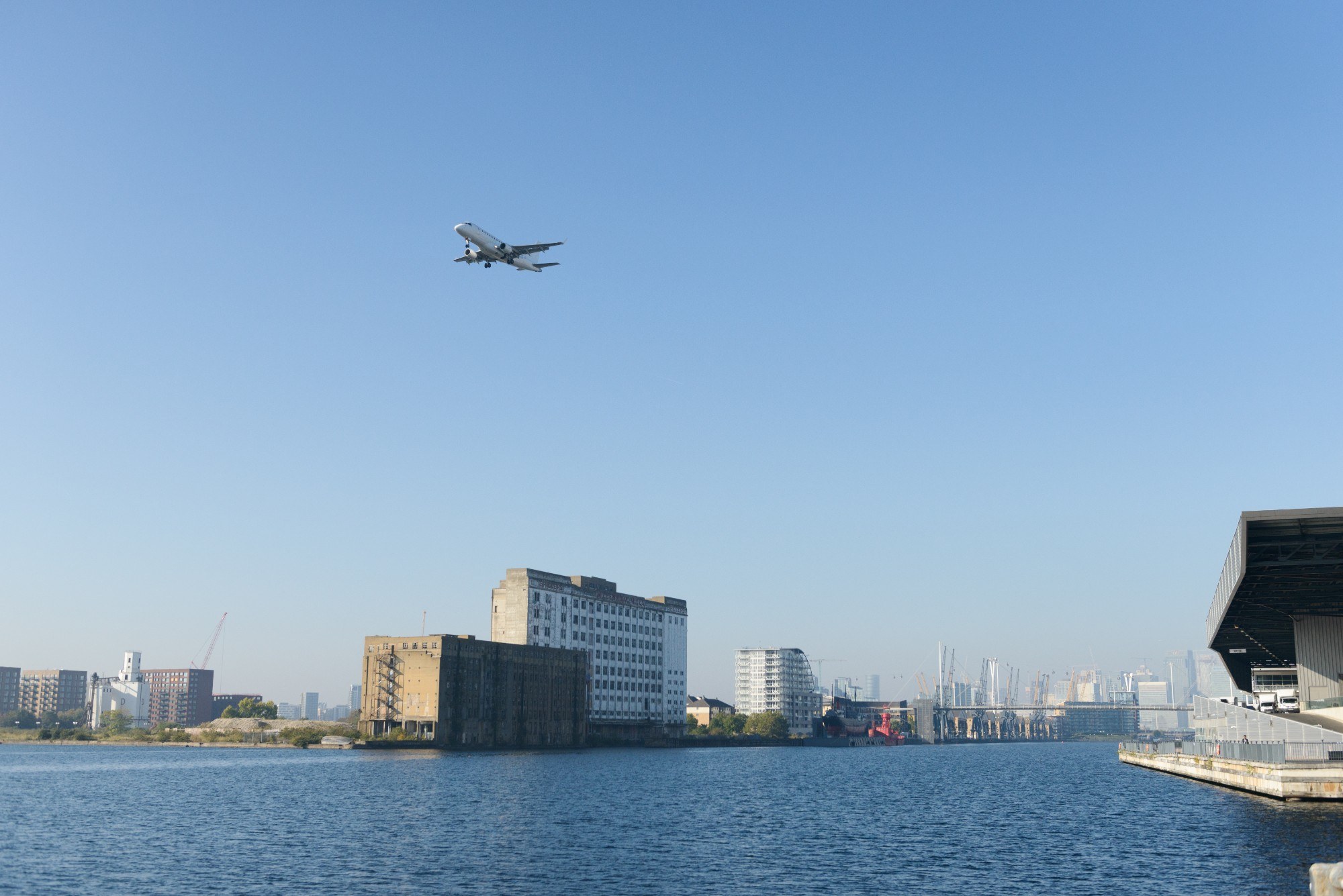
In the immediate future, LCY determined to shake off its suited reputation to become an airport that’s for and of East London. As Robert puts it, “For too long, this place has been seen as an exclusive preserve of people in the finance industry.” Business flights will always be important to LCY, but around half of passengers here are already leisure travellers.
The team hope that City becomes a “home airport” for East London and the Royal Docks. Take the twice-a-day route to Vilnius, for instance, that first flew from City last December. “The largest population of Lithuanians outside of Lithuania is in Beckton, would you believe?” says Robert, “So they’re just delighted with this service.”
People head home through these gates to visit relatives in Nairobi, Lagos, and across the US. It also draws people into the capital and the borough from abroad, skipping the aggravation of a £25 Heathrow Express ticket: “We are morphing into a facility which is connecting London to the world.” In 2018, 304,000 passengers started their journeys in Newham.
For too long, this place has been seen as an exclusive preserve of people in the finance industry.
Robert Sinclair, London City Airport CEO
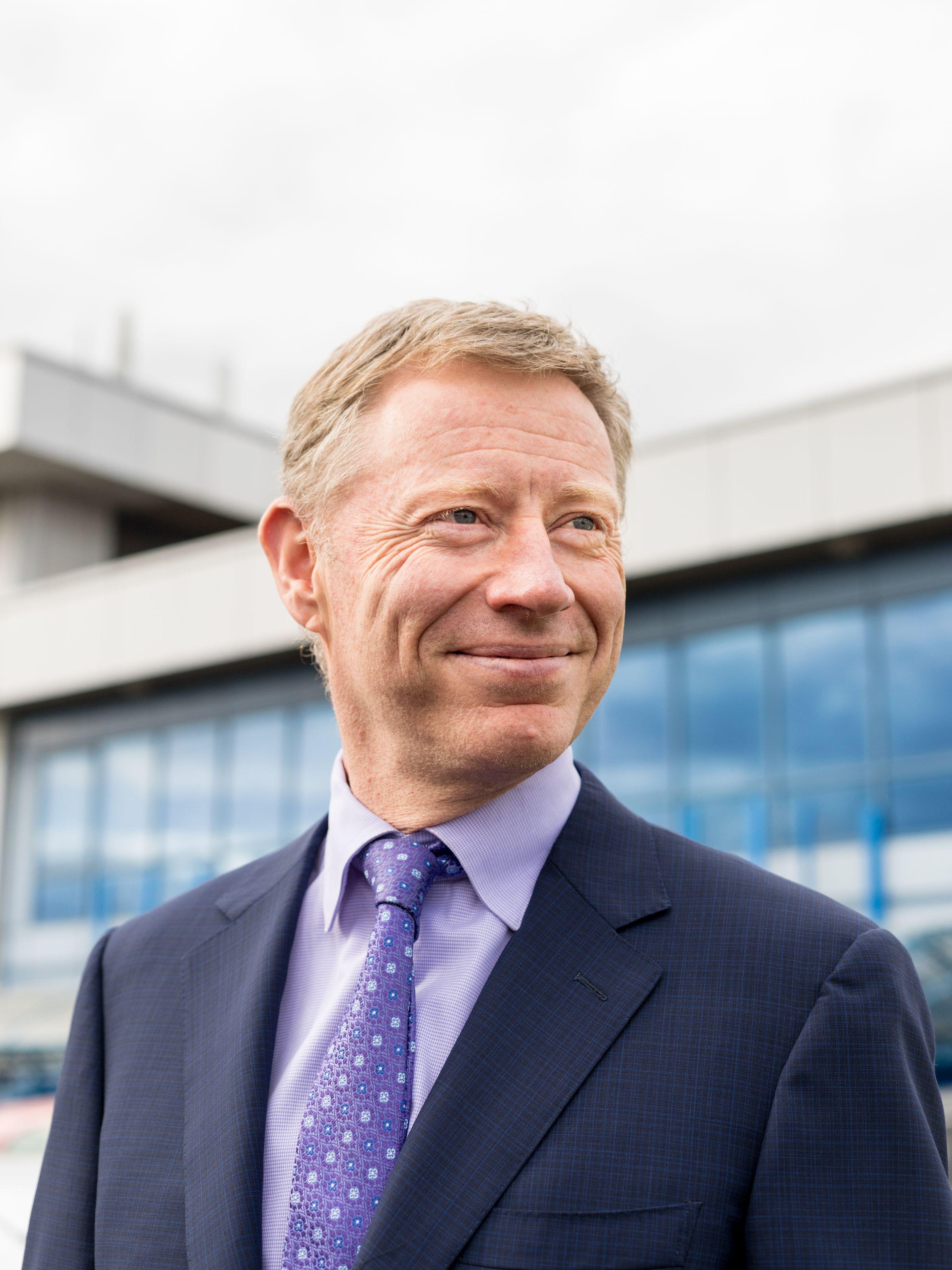
Amid the ambition of the 2020-2035 Draft Master Plan, it’s easy to forget that LCY is already in the middle of one of the largest inland marine projects in western Europe. The City Airport Development Programme is busy converting a tract of King George V Dock into land. “It’s enormous. Eleven football pitches is the size of the land that we are creating. Most airports, you just erect the fence.”
Workers even uncovered a 500-kilogram WW2 bomb in the dock, the largest that has been found in London for five years. Drilling into the dock floor, they missed it by just four metres. “That was before my time, back in 2008, I’m pleased to say,” Robert adds. In the docks, history is never far below.
Consultation on London City Airport’s Draft Master Plan is open until 18 October. Read more here and give your views.

